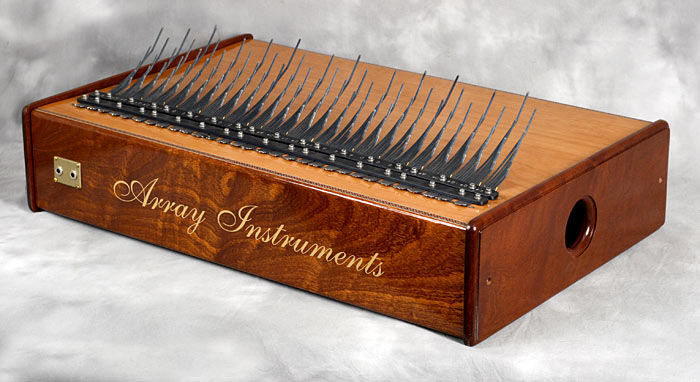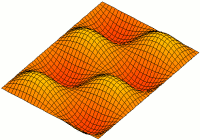|
Kisanji
Kisanji is the name given to the lamellaphone of the Ngala-speaking people of western DR Congo and eastern Congo Republic. It is also known as Ikembe, Chisanji, Eleke or sanza, and is played by holding the instrument in both hands and plucking the keys with the thumbs. The pitch of each metal key is determined by the width of the key. Most often the placement of the keys is symmetrical, with the lowest keys in the middle and the higher keys on each end of the instrument. The most common tuning is the pentatonic scale without semitones, for example ''do re mi sol la'', which varies by region. The music played on the sanza is polyrhythmic with overlapping rhythms. The instrument is often used to accompany the voice, to great effect. The keys are attached to a sounding board by metal strips or wires and placed over a gourd or clay resonator of varying sizes. The number of keys varies by region, as well. Within each region the instrument can take on a variety of shapes. The sanza ... [...More Info...] [...Related Items...] OR: [Wikipedia] [Google] [Baidu] |
Lamellaphone
A lamellophone (also lamellaphone or linguaphone) is a member of the family of musical instruments that makes its sound by a thin vibrating plate called a lamella or tongue, which is fixed at one end and has the other end free. When the musician depresses the free end of a plate with a finger or fingernail, and then allows the finger to slip off, the released plate vibrates. An instrument may have a single tongue (such as a Jew's harp) or a series of multiple tongues (such as a mbira thumb piano). Linguaphone comes from the Latin root ''lingua'' meaning "tongue", (i.e., a long thin plate that is fixed only at one end). lamellophone comes from the Latin word ' for "small metal plate", and the Greek word ''phonē'' for "sound, voice". The lamellophones constitute category 12 in the Hornbostel–Sachs system for classifying musical instruments, plucked idiophones. There are two main categories of plucked idiophones, those that are in the form of a frame (121) and those that are i ... [...More Info...] [...Related Items...] OR: [Wikipedia] [Google] [Baidu] |
Kisanji
Kisanji is the name given to the lamellaphone of the Ngala-speaking people of western DR Congo and eastern Congo Republic. It is also known as Ikembe, Chisanji, Eleke or sanza, and is played by holding the instrument in both hands and plucking the keys with the thumbs. The pitch of each metal key is determined by the width of the key. Most often the placement of the keys is symmetrical, with the lowest keys in the middle and the higher keys on each end of the instrument. The most common tuning is the pentatonic scale without semitones, for example ''do re mi sol la'', which varies by region. The music played on the sanza is polyrhythmic with overlapping rhythms. The instrument is often used to accompany the voice, to great effect. The keys are attached to a sounding board by metal strips or wires and placed over a gourd or clay resonator of varying sizes. The number of keys varies by region, as well. Within each region the instrument can take on a variety of shapes. The sanza ... [...More Info...] [...Related Items...] OR: [Wikipedia] [Google] [Baidu] |
Gourd
Gourds include the fruits of some flowering plant species in the family Cucurbitaceae, particularly '' Cucurbita'' and '' Lagenaria''. The term refers to a number of species and subspecies, many with hard shells, and some without. Many gourds have large, bulbous bodies and long necks, such as Dipper Gourds, many variations of Bottle Gourd and caveman club gourds. One of the earliest domesticated types of plants, subspecies of the bottle gourd, '' Lagenaria siceraria'', have been discovered in archaeological sites dating from as early as 13,000 BC. Gourds have had numerous uses throughout history, including as tools, musical instruments, objects of art, film, and food. Terminology ''Gourd'' is occasionally used to describe crop plants in the family Cucurbitaceae, like pumpkins, cucumbers, squash, luffa, and melons. More specifically, ''gourd'' refers to the fruits of plants in the two Cucurbitaceae genera '' Lagenaria'' and '' Cucurbita'', or also to their hollow, dried-ou ... [...More Info...] [...Related Items...] OR: [Wikipedia] [Google] [Baidu] |
Comb Lamellophones
A comb is a tool consisting of a shaft that holds a row of teeth for pulling through the hair to clean, untangle, or style it. Combs have been used since prehistoric times, having been discovered in very refined forms from settlements dating back to 5,000 years ago in Persia. Weaving combs made of whalebone dating to the middle and late Iron Age have been found on archaeological digs in Orkney and Somerset. Description Combs are made of a shaft and teeth that are placed at a perpendicular angle to the shaft. Combs can be made out of a number of materials, most commonly plastic, metal, or wood. In antiquity, horn and whalebone was sometimes used. Combs made from ivory and tortoiseshell were once common but concerns for the animals that produce them have reduced their usage. Wooden combs are largely made of boxwood, cherry wood, or other fine-grained wood. Good quality wooden combs are usually handmade and polished. Combs come in various shapes and sizes depending on what they ... [...More Info...] [...Related Items...] OR: [Wikipedia] [Google] [Baidu] |
Angola
Angola, officially the Republic of Angola, is a country on the west-Central Africa, central coast of Southern Africa. It is the second-largest Portuguese-speaking world, Portuguese-speaking (Lusophone) country in both total area and List of countries and dependencies by population, population and is the List of African countries by area, seventh-largest country in Africa. It is bordered by Namibia to the south, the Democratic Republic of the Congo to the north, Zambia to the east, and the Atlantic Ocean to the west. Angola has an Enclave and exclave, exclave province, the province of Cabinda Province, Cabinda, that borders the Republic of the Congo and the Democratic Republic of the Congo. The capital and most populous city is Luanda. Angola has been inhabited since the Paleolithic, Paleolithic Age. After the Bantu expansion reached the region, states were formed by the 13th century and organised into confederations. The Kingdom of Kongo ascended to achieve hegemony among the ... [...More Info...] [...Related Items...] OR: [Wikipedia] [Google] [Baidu] |
Kingdom Of Loango
The Kingdom of Loango (also ''Luangu'', ''Luaangu'', ''Lwaangu'', ''Lwangu'', ''Luango'', ''Lwango'', ''Luaango'' or ''Lwaango'' Iko Kabwita Kabolo, ''Le royaume Kongo et la mission catholique 1750-1838'', KARTHALA Editions, 2004, p. 303-313) was a pre- colonial African Kongo state, during approximately the 16th to 19th centuries in what is now the western part of the Republic of the Congo, Southern Gabon and Cabinda. Situated to the north of the more powerful Kingdom of Kongo, at its height in the 17th century Loango influence extended from Cape St Catherine in the north to almost the mouth of the Congo River. Loango exported copper to the European market, and was a major producer and exporter of cloth. The English traveller Andrew Battel, when he was there in about 1610, recorded that the predecessor of the unnamed king ruling at that time was named "Gembe" or Gymbe (modernized as ''Njimbe''), possibly the founder of the kingdom. With the death of King Buatu in 1787, the s ... [...More Info...] [...Related Items...] OR: [Wikipedia] [Google] [Baidu] |
University Of South Dakota
The University of South Dakota (USD) is a public research university in Vermillion, South Dakota, United States. Established by the Dakota Territory legislature in 1862, 27 years before the establishment of the state of South Dakota, USD is the flagship university of South Dakota and the state's oldest public university. It occupies a campus located in southeastern South Dakota, approximately southwest of Sioux Falls, northwest of Sioux City, Iowa, and north of the Missouri River. The university is home to South Dakota's only medical school and law school. It is also home to the National Music Museum, with over 15,000 American, European, and non-Western instruments. USD is governed by the South Dakota Board of Regents, and its president is Sheila Gestring. The university has been accredited by the North Central Association of College and Schools since 1913. It is classified among "R2: Doctoral Universities – High research activity". University of South Dakota's alumni ... [...More Info...] [...Related Items...] OR: [Wikipedia] [Google] [Baidu] |
Mbira
Mbira ( ; ) are a family of musical instruments, traditional to the Shona people of Zimbabwe. They consist of a wooden board (often fitted with a resonator) with attached staggered metal Tine (structural), tines, played by holding the instrument in the hands and plucking the tines with the thumbs (at minimum), the right Index finger, forefinger (most mbira), and sometimes the left Index finger, forefinger. Musicology, Musicologists classify it as a lamellaphone, part of the plucked idiophone family of musical instruments. In Eastern and Southern Africa, there are many kinds of mbira, often accompanied by the hosho (instrument), hosho, a percussion instrument. It is often an important instrument played at religious ceremonies, weddings, and other social gatherings. The "Art of crafting and playing Mbira/Sansi, the finger-plucking traditional musical instrument in Malawi and Zimbabwe" was added to the UNESCO Intangible Cultural Heritage Lists#Representative list of the Intangible Cu ... [...More Info...] [...Related Items...] OR: [Wikipedia] [Google] [Baidu] |
Resonator
A resonator is a device or system that exhibits resonance or resonant behavior. That is, it naturally oscillates with greater amplitude at some frequencies, called resonant frequencies, than at other frequencies. The oscillations in a resonator can be either electromagnetic or mechanical (including acoustic). Resonators are used to either generate waves of specific frequencies or to select specific frequencies from a signal. Musical instruments use acoustic resonators that produce sound waves of specific tones. Another example is quartz crystals used in electronic devices such as radio transmitters and quartz watches to produce oscillations of very precise frequency. A cavity resonator is one in which waves exist in a hollow space inside the device. In electronics and radio, microwave cavities consisting of hollow metal boxes are used in microwave transmitters, receivers and test equipment to control frequency, in place of the tuned circuits which are used at lowe ... [...More Info...] [...Related Items...] OR: [Wikipedia] [Google] [Baidu] |
Pentatonic Scale
A pentatonic scale is a musical scale with five notes per octave, in contrast to heptatonic scales, which have seven notes per octave (such as the major scale and minor scale). Pentatonic scales were developed independently by many ancient civilizations and are still used in various musical styles to this day. As Leonard Bernstein put it: "The universality of this scale is so well known that I'm sure you could give me examples of it, from all corners of the earth, as from Scotland, or from China, or from Africa, and from American Indian cultures, from East Indian cultures, from Central and South America, Australia, Finland ...now, that is a true musico-linguistic universal." There are two types of pentatonic scales: Those with semitones (hemitonic) and those without (anhemitonic). Types Hemitonic and anhemitonic Musicology commonly classifies pentatonic scales as either ''hemitonic'' or ''anhemitonic''. Hemitonic scales contain one or more semitones and anhemitonic s ... [...More Info...] [...Related Items...] OR: [Wikipedia] [Google] [Baidu] |
Polyrhythmic
Polyrhythm () is the simultaneous use of two or more rhythms that are not readily perceived as deriving from one another, or as simple manifestations of the same meter. The rhythmic layers may be the basis of an entire piece of music (cross-rhythm), or a momentary section. Polyrhythms can be distinguished from irrational rhythms, which can occur within the context of a single part; polyrhythms require at least two rhythms to be played concurrently, one of which is typically an irrational rhythm. Concurrently in this context means within the same rhythmic cycle. The underlying pulse, whether explicit or implicit can be considered one of the concurrent rhythms. For example, the son clave is poly-rhythmic because its 3 section suggests a different meter from the pulse of the entire pattern. In western art music In some European art music, polyrhythm periodically contradicts the prevailing meter. For example, in Mozart's opera ''Don Giovanni'', two orchestras are heard playin ... [...More Info...] [...Related Items...] OR: [Wikipedia] [Google] [Baidu] |
Holding An Mbira Dzavadzimu
Holding may refer to: Film and television * ''The Holding'' (film), 2011 British film * "Holding", an episode of the American animated television series ''Beavis and Butt-Head'' * ''Holding'' (TV series), a 2022 TV series based on the book by Graham Norton * '' The Miroslav Holding Co.'', 2001 Croatian film, also released as ''Holding'' Other uses * Holding an object with the hands, or grasping * ''Holding'', a novel by Graham Norton * Holding (aeronautics), a manoeuvre in aviation * Holding (American football), a common penalty in American football * Holding (law), the central determination in a judicial opinion * Holding (surname) * Holding company, a company that owns stock in other companies See also * * * Smallholding * Hold (other) * The Holding (other) * "Holdin'," a song by Diamond Rio * Hoarding * Possession (law) In law, possession is the exercise of dominion by a person over property to the exclusion of others. To possess something, a ... [...More Info...] [...Related Items...] OR: [Wikipedia] [Google] [Baidu] |





